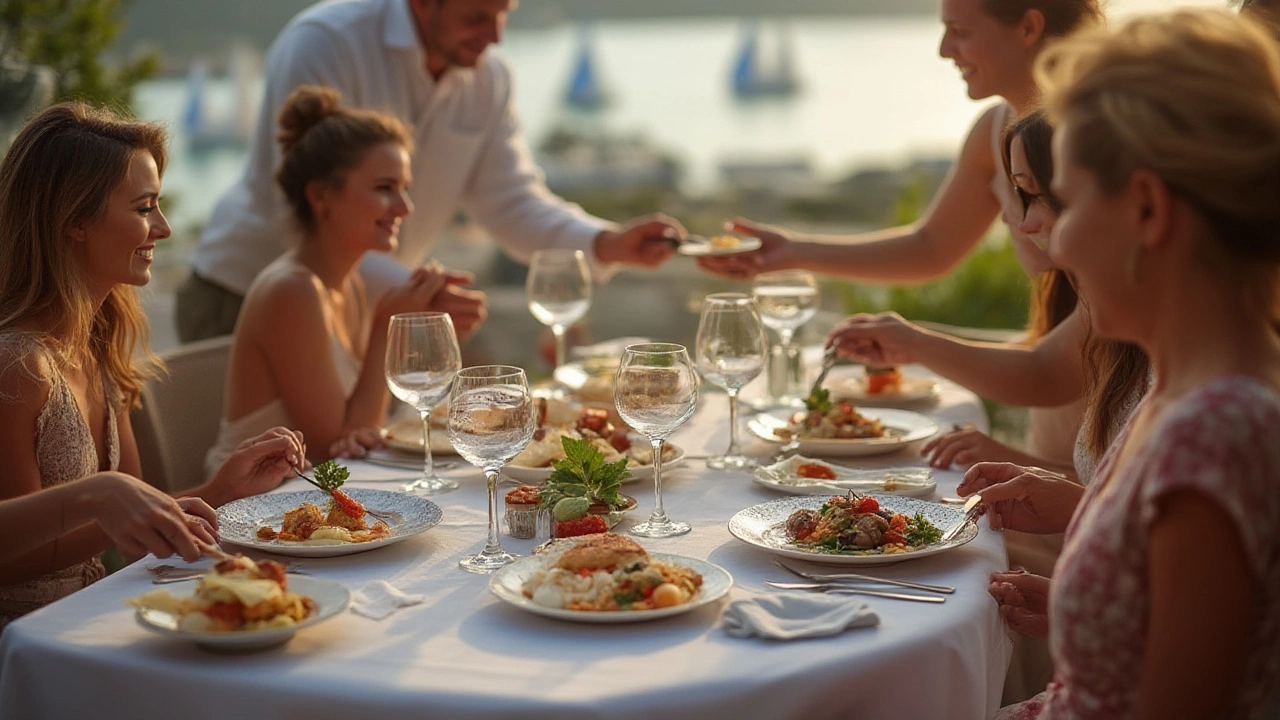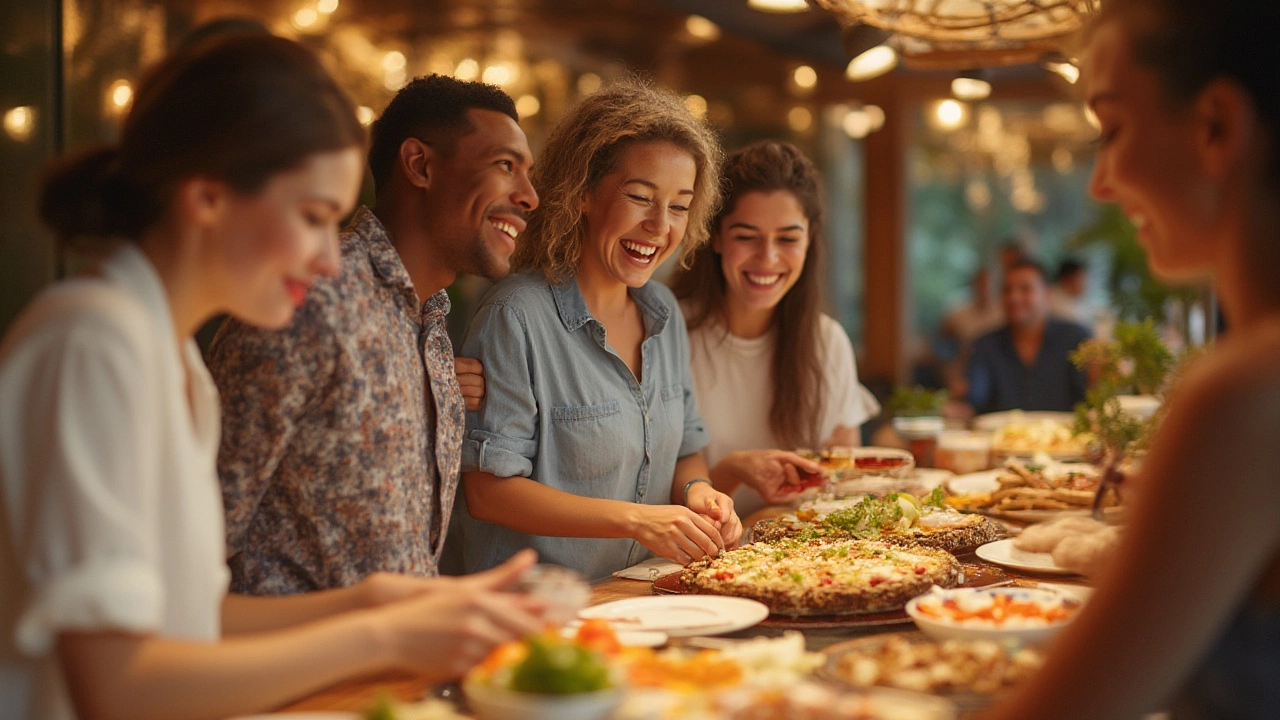All-Inclusive Resorts: The Truth About All-You-Can-Eat Dining
10 Jul, 2025Picture this: You’re hungry, a bit sunburned, and standing in front of endless buffet trays that seem to stretch from Cancun to Punta Cana. The aroma of sizzling burgers competes with fresh seafood, smiling staff point you to a dessert station stacked with twice your recommended daily calories. ‘All you can eat’ flashes through your mind. But does it really mean no limits at all-inclusive resorts? Or are there catchphrases hiding on the room service menu that say otherwise? There’s something almost mythic about the idea—the bottomless plate.
What Does 'All You Can Eat' Mean at All-Inclusive Resorts?
Bragging rights start with the basics. At most all-inclusive resorts, meals and drinks are included in your upfront price. Usually, this means you are not paying extra for breakfast, lunch, dinner, or snacks. Buffets are everywhere—think giant glass sneeze guards, heaping piles of eggs at breakfast, and pasta bars at dinner. The phrase ‘all you can eat’ in this setup is meant to be taken at face value: you can fill your plate as many times as you want. Yes, really. Want a second round of tacos or a sixth plate of shrimp? Nobody is going to count the dessert slices or tally your sausage links.
But, here’s the human part: you’ll run into a few exceptions. Not every food item is equally unlimited. Upscale options, especially lobster or premium steaks, might require a small surcharge or be available only on certain days. That’s not the resort being stingy; it’s just a way to keep costs reasonable and food waste down. At a lot of Caribbean spots, you’ll find special ‘chef’s nights’ where higher-end items come out, and those are the times to cash in.
À la carte restaurants at resorts work differently than the buffet. Here, you sit and order off a menu, but there’s still plenty of freedom. Most à la carte dinners let you order as many courses or portions as you want, and many guests do. However, there’s usually a polite understanding not to order just for show—don’t request five steaks unless you plan to at least try them. Some luxury resorts limit the number of nights you can book each à la carte spot, partly to ensure everyone gets a turn, especially in high season. Always check your wristband or room info card to see if there’s a reservation rule.
Room service is where people get most confused. At many all-inclusives, room service has a limited menu (think burgers, sandwiches, light entrees), but you can order as much as you want, sometimes 24/7. But some budget resorts charge a delivery fee or limit the number of room service orders per day. Double-check the fine print if midnight snacks matter to you. And don’t forget, if you run into something confusing or a staff member seems to say no to a certain order, it’s probably not a conspiracy—ask for clarification or help. Friendly questions go a long way.
What’s not included under ‘all you can eat’? Minibar snacks (little cans of Pringles, fancy chocolates) are a gray area. Some high-end resorts shovel these into your room daily at no extra cost, but others use them as a profit center. Resort brochures won’t always highlight this. Alcohol is usually included, but super-premium cocktails or rare wines may cost extra, unless you’re at the very top-tier properties. Even with those exceptions, the overwhelming majority of your food and regular drinks will be covered by the flat fee.
If you want to see how this all stacks up, here's some sample data from various hotel chains in the Caribbean and Mexico:
| Resort Chain | Buffet Access | À la Carte | Room Service | Premium Items |
|---|---|---|---|---|
| Riu | Unlimited | Unlimited, reservation may be required | Limited menu, may have delivery charge | Extra for lobster or wine |
| Iberostar | Unlimited | Reservations, often limit of 3 nights per week | Included, limited menu | Premium fees |
| Sandals | Unlimited | Unlimited, no reservations needed | Full menu, included 24/7 | Premium wine extra |
Of course, real-life stories can get weird. A friend once tried to take a pizza from a poolside oven back to his room, only for a parrot—not a staff member—to swipe a slice. Most of the time, your only limit is your appetite (or the local wildlife).

Tips for Getting the Most (and Not Overdoing It)
Just because buffets are endless doesn’t mean your stomach is, and feeling sick on vacation is never the vibe. Here’s where you want to be savvy, not greedy. Start with a walk-through; look over all your options before you pile your plate. Some resorts swap out dishes mid-service, so if you don’t spot that paella at first, check back later. Most chefs are happy to whip up a ‘special order’ if you have food allergies or just fancy pancakes for dinner—just ask nicely. Trying the local specialties pays off: Mexican resorts shine with fresh ceviche, while Jamaican spots often have killer jerk chicken served right on the beach.
Don’t ignore the small print on reservation policies for à la carte spots. Popular restaurants fill up fast, especially at bigger resorts. It sounds silly, but it’s worth setting a reminder right after check-in to snag your preferred night for sushi, steak, or whatever catches your eye. And here's a hack: staff love genuine compliments. Show a bit of interest in the chef or ask about secret off-menu options—sometimes resorts have theme nights or special tasting menus if you make friends with the waitstaff.
Buffet etiquette is a thing. Resist the urge to heap everything onto one plate; go for smaller, repeated tastes. This helps you try more dishes and reduces waste. Some resorts have posted rules to discourage food hoarding—a real issue in places with a lot of food tourism. Avoid the sad fate of having your table resemble a bachelor party after the appetizers.
If you’re traveling with picky eaters or kids, check out which resorts offer kid-friendly stations or dedicated menus. Some properties even offer baby food blends or allergy-safe kitchens—huge if you’re worried about nuts or gluten. Scan the event calendar, too. A lot of resorts put on ‘food festivals’—one week might be all about tacos, another week’s dessert-focused. Planning your trip around a favorite theme can mean way more fun by the buffet.
Food safety is always worth thinking about. Buffets are kept hot or cold for a reason, so don’t dabble with food left sitting out. Warn your travel buddies about undercooked shellfish or local water. Most all-inclusives do a good job, but everyone has a story about a cousin who underestimated the Caesar salad. Ask for bottled water if you’re sensitive.
Drinks are a bonus, but keep your wits: resort cocktails are notorious for being sugary and strong. Hydrate with water in between rounds to keep from getting wiped out by 3 PM. If coffee is your thing, try the local brew. Caribbean and Latin American countries often have unique blends you won’t find at home. If you’re there for the wine list, ask what’s included—usually house pours are free, but there’s often an upcharge for premium bottles or champagne.
Let’s talk waste. An estimated 40% of food gets tossed at some resorts, so make like Whiskers (my cat, not the guy at the buffet with the epic mustache) and only take what you know you’ll finish. Remember, you can always go back for seconds. There’s something satisfying about a clean plate—and a clean conscience.

Real-Life Know-How: What the Brochures Don’t Say
Hidden menu gems, surprise charges, and staff quirks—these get missed in glossy ads. Most all-inclusive brochures promise unlimited decadent feasts, but reality can be a mixed bag depending on where you stay. The easiest way to dodge disappointment is to check recent guest reviews. People love spilling the truth on forums, and you’ll hear if a place has scaled back on lobster nights or gotten stingy with the spirits.
Here’s a curveball: some of the best food at resorts isn’t in the main buffet or restaurant, but at pop-up events and beach barbecues. Don’t just stick to the dining halls—keep your eyes peeled for grilling contests, chef tastings, and taco stands that suddenly show up near the pool. Ask activities staff about off-schedule events; they sometimes know before it’s formally announced. You might just wander into a churro stand or fresh coconut cart by accident.
Navigating premium charges is part art, part common sense. Resorts usually mark these items clearly on menus, but sometimes they show up as ‘Market Price’ with a sly wink. If you don’t want a surprise bill at checkout, ask before ordering extra-fancy seafood or imported liquor. Some resorts have ‘all you can eat’ upgraded packages that widen what’s freely available—worth it if you’re celebrating or have a taste for the finer things.
Different cultures, different customs. At European all-inclusives, you might find mealtimes run on stricter hours compared to Latin American resorts, which are more laid-back about letting you hit up the buffet at odd hours. If you’re a night owl or running on a different time zone, ask what’s open after midnight. Some places will keep a snack bar going into the small hours, but others shut by 10 or 11 PM.
Here’s a practical checklist to maximize your food freedom:
- Walk the entire buffet before you fill your plate—see what's on offer.
- Ask at check-in which à la carte restaurants require reservations, and book early.
- Find out what’s included at the room minibar and what isn’t—don’t get caught with a surprise bill.
- Chat up the staff—friendly questions can unlock hidden treats or get you a tour behind the food station.
- Balance out indulgent meals with fresh fruit and water, especially if you’re going big at breakfast or dinner.
- Monitor for special events, food trucks, or guest chef appearances—they often aren’t advertised widely.
So, is an all-inclusive resort really ‘all you can eat’? If you don’t sweat the small exceptions and embrace the buffet (in moderation), the answer’s mostly yes. Plenty of guests report needing a vacation from their vacation after several days of sampling everything under the sun. But there’s a real joy in letting loose, trying new tastings, and sampling a bit of everything without worrying about the tab. Next time you pack your bag for paradise, just remember: know your limits, pace yourself, and leave a little room for surprise—whether it’s a street taco or an invite to a chef’s table. Bon appétit… and maybe pack some antacids, just in case.

 by
by